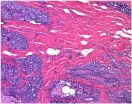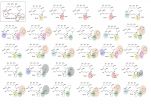INFORMATION:
Other participants in this research include Nicolas A. Kurczewski, MS, recent master's student in mechanical engineering, now at Amazon Research, and Erick W. Froede, MS, recent master's student in mechanical engineering, now a graduate student at Siemens Healthcare Diagnostics.
Students design workstations that accommodate groups and individual
2014-12-10
(Press-News.org) New school and office workspace designs created by a group of Penn State engineering students are intended to allow users to share space and materials while maintaining their own work areas -- a dual purpose the researchers say has been neglected.
The research began in 2010 as a class project, according to Joseph M. Mahoney, former Penn State graduate student, now assistant professor of mechanical engineering, Penn State, Berks. "There's a lot of interest from an ergonomics perspective and workplace efficiency perspective of designing workstations for single users," Mahoney said. "But what we didn't see was, how do you quantitatively design something for multiple users to interact with each other and to have their own space?"
With this question in mind, Mahoney and his fellow students began by creating a virtual population of one million workstation users. They obtained population characteristics, such as age, body mass index and height from the National Health and Nutrition Examination Survey, and arm-length data from the US Army Anthropometric Survey. The surveys' data overlapped, but neither contained all the measurements the team needed so they matched the two populations using body mass index and height for each user, which both surveys contained.
The team's goal was to apply these characteristics in designing a workstation that would provide users their own area while also offering a shared workspace. To see whether users' space would overlap, they needed their population's "extended reach zones," or how far a person of certain proportions could comfortably reach -- for example, to hand a book to a colleague. To measure extended reach zones, the team turned to their 21 classmates, asking each to sit at a table and place a wooden block as far away as they comfortably could at different angles. The researchers statistically related these extended reach zones to each participant's body measurements so that the reach zones were applicable to the larger simulated population.
The team then looked at how these results affected workstation use. They ran five million random pairings from their virtual populations to see if "normal reach zones" -- based on arm length -- and extended reach zones -- how far each person could comfortably reach -- overlapped at tables of various shapes and proportions.
"We randomly select two people from this million-person population and we seat them at this table," said Mahoney.
If the pair's normal reach zones did not overlap but the extended reach zones did, then they had enough space to work individually but were also within reach of colleagues for the purpose of collaborating. Workstation designs that met these parameters were functional for the team's goal of accommodating the needs of both individuals and groups.
"We came up with a way of designing devices for multiple people to work together and also to be able to work independently, which had not been seen in previous work," said Mahoney.
Finally, the researchers used their results to find table shapes and sizes that would accommodate both groups and individuals from two virtual populations -- one representing Penn State library users and the other, Penn State engineering students. They adjusted each population's sex ratio to the proportions found within the actual Penn State populations with an age range of 18 to 30 years old. There were substantially more males than females in the engineering population and slightly more males than females in the general student population. The team tested square tables with users sitting either at the sides or at the corners, as well as triangular and circular workstations of varying sizes.
The researchers found that, for square and triangular workstations, there was a range of table side lengths that would allow users to overlap and share materials while maintaining a personal work space. Outside these size ranges, the percentage of pairs accommodated quickly decreased. Shorter table sides would force users to crowd together without personal workspace, and longer table dimensions would leave them too far apart to share materials. For circular tables, for which the researchers only tested the full university population, they identified three table diameters -- about seven feet, eight-and-a-half feet and ten feet -- that could most efficiently accommodate groups of three to six people.
The team continued to pursue the project after the class ended, with the encouragement of Matthew Parkinson, associate professor of engineering design and mechanical engineering. Ultimately they published their findings in the journal Applied Ergonomics.
ELSE PRESS RELEASES FROM THIS DATE:
Ancient creature discovered in the depths of the Arctic Ocean
2014-12-10
In the depths of the Arctic Ocean, buried deep in the sediment, an ancient creature waited for over a million years to be discovered. Paul Valentich-Scott, from the Santa Barbara Museum of Natural History (California), and three scientists from the United States Geological Survey (USGS, Menlo Park, California), Charles L. Powell, Brian D. Edwards, and Thomas D. Lorenson were up to the challenge. Each with different expertise, they were able to collect, analyze, and identify a new genus and new species of bivalve mollusk.
The path to discovery is seldom simple or easy. ...
New breast cancer classification based on epigenetics
2014-12-10
Breast cancer is the most common in women. One in nine will suffer breast cancer over their lifetime. Progress in prevention and early detection, and the use of chemotherapy after surgery (adjuvant chemotherapy), have achieved significantly increase survival in this disease in the last ten years, but much remains to be done.
The identification of patients with high-risk breast cancer is key to knowing whether a patient will require only the removal of the tumor by surgery or whether if she will need additional chemotherapy to make sure the removal of breast cancer cells. ...
Analogues of a natural product are drug candidates against malaria
2014-12-10
Malaria is one of the most serious health problems worldwide, registering 200 million clinical cases and more than 600,000 attributable deaths per year, according to information from the World Health Organization in 2013. Given the emerging resistance to the standard treatment most widely used throughout the world, which is based on artemisinin and its analogs, there is a need for new antimalarial compounds.
In this regard, scientists headed by Lluís Ribas de Pouplana, ICREA researcher at the Institute for Research in Biomedicine (IRB Barcelona), report on a new ...
As in a cloud
2014-12-10
This news release is available in German. FRANKFURT. Frankfurt physicists have once again contributed to resolving a disputed matter of theoretical physics. Science has long since known that, contrary to the old school of thought, helium forms molecules of two, three or even more atoms. Exactly what helium consisting of three atoms looks like, however, has been disputed by theoretical physicists for about 20 years. Besides the intuitive assumption that the three identical components form an equilateral triangle, there was also the hypothesis that the three atoms are ...
Lifestyle the key to gap in cardiac patient outcomes
2014-12-10
Patients suffering from the world's most common heart rhythm disorder can have their long-term outcomes significantly improved with an aggressive management of their underlying cardiac risk factors, according to University of Adelaide researchers.
Atrial fibrillation (AF) is increasingly responsible for dementia, stroke and death, and has a significant impact on healthcare costs. With electrical "short circuits" believed to be responsible for the abnormal beating of the heart in AF patients, one currently used treatment is to burn the tissue surrounding the problem area, ...
Phenomenal fossil and detailed analysis reveal details about enigmatic fossil mammals
2014-12-10
Mammals that lived during the time of the dinosaurs are often portrayed as innocuous, small-bodied creatures, scurrying under the feet of the huge reptiles. In reality, this wasn't the case, and a new fossil from Madagascar further underscores this point, revealing fascinating perspectives on the growing diversity of Mesozoic mammals. Vintana sertich had previously been described in a preliminary note in November of this year, but a new memoir in the Journal of Vertebrate Paleontology delves far deeper into the morphology and paleoecology of this amazing fossil animal. ...
Supplement could reduce heart disease risk in people of low birth weight
2014-12-10
A simple supplement could be a safe and cost-effective way of reducing heart disease in individuals born with a low birth weight, suggests research from the University of Cambridge. The study, carried out in rats, also raises the possibility of developing a blood test to indicate how much damage there is in the aortas of these individuals.
Researchers at the Institute of Metabolic Science fed low birth weight rats a supplement of the molecule co-enzyme Q (CoQ) and found that in those rats that grew quickly after birth, the supplement prevented cells in the aorta from ...
Disney Researchers use multiple photos to estimate lighting conditions of outdoor scenes
2014-12-10
Techniques now used to reconstruct 3D models based on multiple photos of a building, object or scene can also be leveraged to automatically estimate illumination conditions depicted in a collection of photographs, scientists at Disney Research and Université Laval report.
Everyone knows that objects can look markedly different depending on lighting conditions, the physical characteristics of the objects and the angle at which they are viewed. That makes it difficult for photo editors to insert 3D objects into imagery and make them appear as if they are reflecting ...
Carbon soot particles, dust blamed for discoloring India's Taj Mahal
2014-12-10
The Taj Mahal's iconic marble dome and soaring minarets require regular cleaning to maintain their dazzling appearance, and scientists now know why. Researchers from the United States and India are pointing the finger at airborne carbon particles and dust for giving the gleaming white landmark a brownish cast.
Knowing the culprits in the discoloration is just the first step in cleaning up the Taj Mahal. Scientists now must determine where the particles are coming from to develop strategies for controlling them.
"Our team was able to show that the pollutants discoloring ...
Health care lessons learned in the aftermath of September 11, 2001
2014-12-10
New York, NY, December 9, 2014 - Fourteen years after the attack on the World Trade Center (WTC), a case study in the current issue of Annals of Global Health identifies several elements that have had a critical impact on the evolution of the WTC response and, directly or indirectly, on the health of the WTC-exposed population. The case study also recounts and assesses post-disaster monitoring efforts, recent scientific findings from the World Trade Center Health Program (WTCHP), and explores the implications of these experiences for ongoing and future environmental disaster ...




